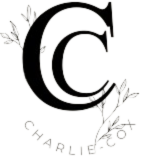
Pets are beloved companions and your brand can make a connection with this important demographic by leveraging trends that are shaping pet care — and the packaging can support this growth.
Amcor’s Marketing Manager, Manuela Teixeira, runs the Pet Food division and has some keen insights into the trends that are driving the pet food market. According to Manuela, pet humanisation, brand transparency, and sustainability are among the most important driving factors in the industry today. If you are in need of pet food packaging solutions, then please see here.
Sustainability is one of the leading trends and adds value to the pet food and pet food packaging industries.
Pet parents are less likely to treat their pets like animals and more like respected members of the family. They seek to provide their pets with every comfort and amenity they could need to live a healthy and happy life. But their affinity for animals extends to choosing environmentally friendly packaging and products.
Over the past two years, greater emphasis has been placed on health and safety. According to research by Mintel, the evidence shows that concerns about environmental safety will remain key issues in the future. People are looking for greater progress in the direction of sustainable packaging, and our R&D department has been churning out some innovative solutions.
Research performed by Amcor has included over 12,000 consumers in 6 countries and the results show that as much as 76% of our customers would like to recycle more than they are recycling now. Recyclability is the most important attribute to customers today and has even risen in importance above reusability in packaging materials.
Pet owners are placing a far greater emphasis on the sustainability of their pet products. This applies to all methods of production for everything from foods to packaging materials. The major pet food brands are all responding to their customer’s demands for greater sustainability in their foods and pet food packaging.
‘Recyclable packaging’ is the most popular and fastest growing claim across the EU. It was noted that between July 2016 and June 2021, all pet food launches that claimed recyclability enjoyed a 5% to 14% increase. It should also be noted that flexible food pouches are the most common type of packaging in European pet food launches, it is also the least likely to carry a claim to recyclability:
The flexible pet food pouch is the most common option for thermally treated food and the best alternative to glass, cans, or other airtight containers. It is lightweight, easy to open, and can be used as needed without any loss of quality, shelf-life, or freshness.
Even though flexible pet food pouches create a reduced carbon footprint when compared to heavier materials, these multi-material pouches for retort applications and thermally treated pet food have also been the most challenging packaging materials to make recyclable. When we first announced our plans to design a recyclable or reusable material for this purpose, we were informed by many industry leaders that such material was impossible.
A recyclable pet food pouch would need a material with the durability to withstand heat sterilization, an extended period of shelf life, and materials that break down safely. The conventional flexible pet food pouch achieves this high-heat resistance and long-term product protection with a series of plastic layers and aluminum barriers. The outermost layer is made of durable PET, which is also known for its impressive heat protection.
The major problem here is that there are not yet any recycling streams that can process PET-based containers — also called “soft plastics.”
Amcor announced its first recyclable retort pouch in October 2020 the HeatReady™ AmLite. This innovative pouch provides the advantages of the conventional high-heat, high-barrier packaging with recyclable-ready materials. This award-winning packaging is now available in supermarkets everywhere and can be recycled in existing plastic recycling streams.
Health benefits are the priority for pet owners
Pet humanisation causes pet owners to apply the same standards of feeding their pets as they do to themselves. As the nuclear family vanishes, brands should consider catering to pet-owners-as-parents consumers.
